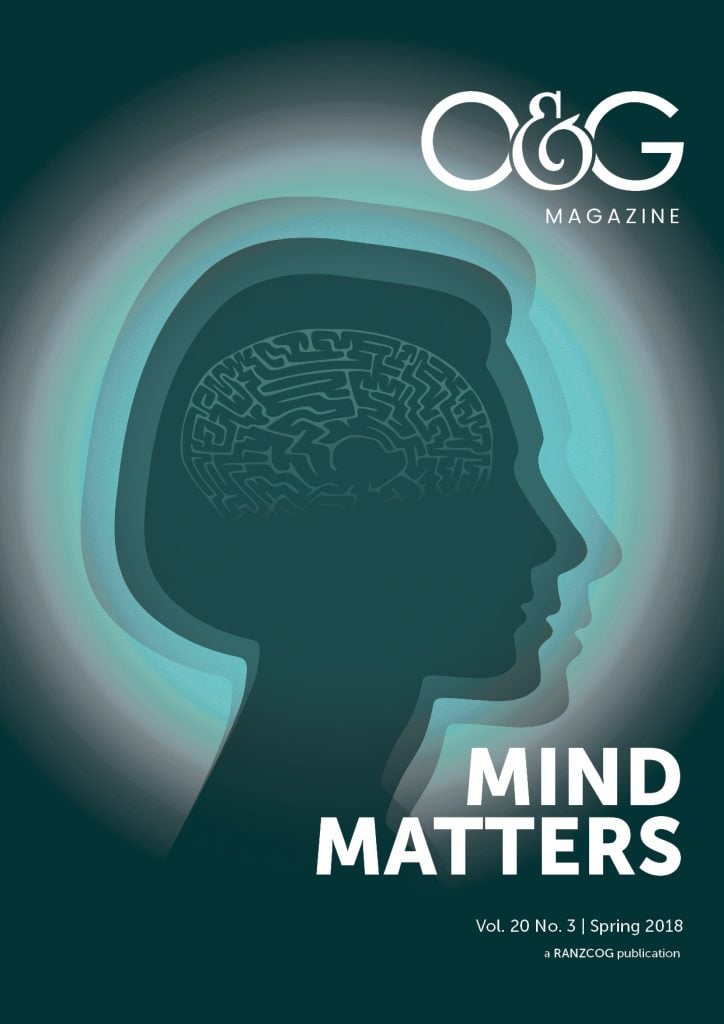Dieting is not unusual, although many of us will still reach for the chocolate on a stressful day and enjoy it, perhaps with a half-hearted plan to resume the diet at another time. Individuals with anorexia nervosa (AN) are unlikely to have such a relaxed reaction. First described by 19th century medical reports,1 AN is characterised by significant weight loss driven by an intense fear of weight gain. These symptoms can also occur in individuals who lose a significant amount of weight in a short time, but are not underweight, a diagnosis referred to as atypical AN. While the cause of AN is unknown, there are likely to be biological, psychosocial and environmental factors at play, as risk factors include female gender, residence in a developed country, genetic heritability and personality traits such as perfectionism.2 Dieting is also a major risk factor, especially in the context of increasing rates of obesity with a focus on weight reduction and physical activity.3
In contrast to AN, adolescents with bulimia nervosa (BN) experience recurrent episodes of binge eating and restriction, exercise or purging, but they do not lose weight. Binge eating disorder (BED) is characterised by recurrent episodes of binge eating without the compensatory behaviours.
A newly described heterogenous eating disorder, avoidant restrictive food intake disorder (ARFID), refers to a significant eating disturbance that is not driven by concern over body shape or weight, unlike AN or BN. Adolescents with ARFID restrict their food intake for a variety of reasons, such as sensory issues, lack of interest, or fear of choking or vomiting. Table 1 shows the diagnostic criteria for these eating disorders.4
The rates of eating disorders vary depending on whether they are population, community or clinic-based samples. Recent studies suggest that lifetime prevalence rates for AN range from 0.3–1.7 per cent, 0.8–0.9 per cent for BN, and 1.6–2.3 per cent for BED. Subthreshold eating disorders occur at much higher rates.5,6 ARFID has not been as well studied. Despite the different aetiologies, each of these disorders has serious medical consequences.
Table 1. Diagnostic criteria for AN, ARFID, BN and BED.
Anorexia nervosa (AN) |
Avoidant restrictive food intake disorder (ARFID) |
Specify whether:
|
An eating or feeding disturbance manifested by persistent failure to meet appropriate nutritional and/or energy needs associated with one (or more) of the following:
The eating disturbance:
|
Bulimia nervosa (BN) |
Binge eating disorder (BED) |
Recurrent episodes of binge eating. An episode of binge eating is characterised by:
Recurrent, inappropriate compensatory behaviours in order to prevent weight gain, such as: self-induced vomiting; misuse of laxatives, diuretics or other medications; fasting; or excessive exercise. The binge eating and inappropriate compensatory behaviours both occur, on average, at least once a week for three months. Self-evaluation is unduly influenced by body shape and weight. The disturbance does not occur exclusively during episodes of AN. |
Recurrent episodes of binge eating. An episode of binge eating is characterised by:
Marked distress regarding binge eating is present. Binge eating occurs, on average, at least once a week for three months. Binge eating is not associated with the recurrent use of inappropriate compensatory behaviours as in BN and does not occur exclusively during the course of BN or AN methods to compensate for overeating, such as self-induced vomiting. |
Complications of eating disorders
While eating disorders can occur in adulthood, they commonly present in the adolescent years, a significant time for growth and development. Disordered eating behaviours can lead to malnutrition or overweight/obesity, affecting multiple organ systems and impacting short and long-term health. The impacts on the major organ systems are discussed below. Typical presentations to the O&G include menstrual disturbance and concerns about fertility.
Menstrual concerns and pubertal development
There is a clear relationship between significant weight loss, excessive exercise and low BMI in AN and amenorrhoea, with suppression of the hypothalamic-pituitary-ovarian axis and low oestrogen levels. On the other hand, BN and BED can also be associated with irregular menstruation and polycystic ovarian syndrome.7 Delayed growth and delayed puberty are common features, especially when restrictive eating disorders such as AN and ARFID occur during the peripubertal period and early adolescence.
Bone health
Restrictive eating disorders pose a significant threat to long-term bone health, as the greatest increase in bone mineral density occurs during the adolescent years. Oestrogen deficiency, hypercortisolaemia, changes in growth hormone, and IGF-1 occurring in malnutrition affect bone formation, as well as playing a role in bone resorption. The best predictive factor of decreased bone density is the duration of amenorrhoea.8 Fifty per cent of adolescents with AN have bone mineral density values of greater than one standard deviation (1 SD) below their healthy peers.9 Up to 30 per cent of adolescent girls and adult women report having sustained a fracture. In addition, women of normal weight with BN were found to have lower spinal bone mineral density compared to their healthy peers, suggesting that factors other than weight loss influence bone metabolism.10
Treatment of amenorrhoea and low bone density should focus on weight gain and restoration of menstrual function, as well as optimisation of calcium and vitamin D. Studies suggest that oestrogen replacement using the combined oral contraceptive pill in adolescents and adults with AN is not effective in improving bone density. There is some research suggesting that transdermal physiologic oestrogen (17β oestradiol) may be useful in increasing bone mineral density, although complete catch up does not occur.11 Bisphosphonates have been effective in improving bone density in adults, however, concerns about long half-lives and potential for teratogenicity limit its use in adolescents and women of childbearing age.
Reproductive health and obstetric concerns
Research on how fertility is affected by eating disorders (even when in remission) is mixed, with clinical samples reporting lower rates of pregnancy compared to matched controls.12 However, population-based studies indicate no difference between rates of pregnancy and infertility treatment in women with a history of AN compared to the normal population.13 There is also a complex association between BN, BED, polycystic ovary syndrome, obesity and infertility.14 Women with BED may have a greater risk of miscarriage.15
A number of large cohort studies have shown that the risk of unplanned pregnancy is higher in women with AN and BN, despite the high prevalence of menstrual disturbance.16 Negative feelings regarding pregnancy are common in women with eating disorders.17 Remission can occur during pregnancy, but relapse may also be triggered.18 Women with BN and BED risk excessive gestational weight gain.19
Studies also show that women with eating disorders experience increased perinatal problems, including postnatal depression and relapse. Infants born to mothers with an eating disorder are more likely to be born prematurely, have lower birth weights, lower Apgar scores and feeding difficulties.20
Cardiac
Common findings in restrictive eating disorders include bradycardia, postural tachycardia, hypotension and postural hypotension. With progressive malnutrition, structural, functional and conduction abnormalities occur more frequently. About half of deaths in AN can be attributed to cardiovascular causes, such as tachyarrhythmias and cardiac failure. Misuse of laxatives, diuretics or purging can lead to electrolyte abnormalities, contributing to predisposition for arrhythmias.21 Metabolic complications and risk of cardiovascular disease are complications of obesity as a result of BED.
Neurological
Patients with eating disorders often complain about headaches and difficulties in concentration. With increasing malnutrition, they can present with psychomotor retardation and inflexible thinking styles. Neuroimaging studies, mostly in patients with AN, report a reduction in both grey and white matter. Studies show that many of these changes were reversible with weight gain. There were similar findings in patients with BN, although less pronounced. Functional brain imaging studies have also shown changes in neural circuitry related to cognitive control, reward and emotion processing. The impact of BED on the brain is still being studied.22
Treatment
Given the significant long-term complications of eating disorders, treatment must focus on improved nutritional status in all eating disorders and weight recovery in restrictive disorders.
Family-based treatment (FBT) has the strongest evidence base for treatment of adolescent AN.23 The aim of FBT is to remove control from the adolescent by tasking the parents with the role of re-feeding.The FBT therapist coaches the parents to support and supervise the adolescent in eating meals and snacks to enable weight gain or maintenance. Due to the success of FBT in adolescent AN, modified forms of FBT have been adapted for use in adults.24 FBT is also used for adolescents with ARFID because of its success in achieving weight gain, although there is currently little data on efficacy given the newness of the disorder.
First-line treatment for BN in adults is cognitive based therapy (CBT).25 CBT aims to normalise eating patterns and reduce binge-purge episodes. In adolescent BN, both FBT and CBT are effective treatment modalities.26 CBT can also be delivered through self-help books when professional therapy is unobtainable. Selective serotonin reuptake inhibitors (SSRIs), particularly high dose (60mg) fluoxetine, may also be used as an adjunct to therapy in patients with BN.27
There is empirical evidence for the use of CBT in BEDs in adults. Pharmacological measures include SSRIs and topiramate may confer additional benefit.28 The management of co-morbid obesity also needs to be taken into account, however, focus only on weight control measures such as diet and exercise may exacerbate restriction, binge eating and purging.
Inpatient treatment has been generally reserved for management of haemodynamic instability, electrolyte abnormalities or suicidality.
Conclusion
Eating disorders are serious mental illnesses that can present at any age, but most commonly in adolescents and young women. These disorders are associated with multiple medical complications and high rates of morbidity and mortality. Early identification and treatment is crucial for better outcomes for young women and their offspring. Young women often present to O&Gs for menstrual disturbance or fertility concerns. This means that O&Gs are well placed to enquire about disordered eating and weight-related behaviours, counsel for pregnancy and refer to, or collaborate with, multidisciplinary teams for treatment.
References
- Gull W. Apepsia hysterica, norexia nervosa. Transactions of the Clinical Society of London. 1874; 7:22-28.
- Mitchison D, Hay P. The epidemiology of eating disorders: genetic, environmental and societal factors. Clinical Epidemiology 2014; 6:89.
- Patton G, Selzer R, Coffey C, et al. Onset of adolescent eating disorders: population based cohort over 3 years. BMJ 1999; 318: 165-168.
- American Psychiatric Association. Diagnostic and statistical manual of mental disorders (DSM-5®). American Psychiatric Pub. 2013 May 22.
- Swanson S, Crow S, Le Grange D, et al. Prevalence and correlates of eating disorders in adolescence. Results from the national comorbidity survey replication adolescent supplement. Arch Gen Pysch 2011; 68:717-723.
- Smink F, Van Hoeken D, Oldehinkel A, et al. Prevalence and severity of DSM-5 eating disorders in a community cohort of adolescents. Int J Eat Disord 2014; 47:610-619.
- Poyastro A, Thornton L, Plotonicov K, et al. Patterns of menstrual disturbance in eating disorders. Int J Eat Disord 2007; 40:424-434.
- Trombetti A, Richert L, Herrmann F, et al. Selective determinants of low bone mineral mass in adult women with anorexia nervosa. In J Endocrinol 2013; 2013:897-19.
- Misra M, Aggarwal A, Miller K, et al. Effects of anorexia nervosa on clinical, hematologic, biochemical and bone density parameters in community dwelling adolescent girls. Pediatrics 2004; 114:1574-1583.
- Robinson L, Aldridge V, Clark E, et al. A systematic review and meta-analysis of the association between eating disorders and bone density. Osteoporosis Int 2016; 27:1953-1966.
- Misra M, Katzmann D, Miller K, et al. Physiologic estrogen replacement increases bone density in adolescent girls with anorexia nervosa. J Bone Miner Res 2011; 26:2430-2436.
- Linna M, Raevuori A, Haukka J, et al. Reproductive health outcomes in eating disorders. Am J Obstet Gynecol 2013; 46:826-833
- Micali N, dos Santos-Silva I, Stavola B, et al. Fertility treatment, twin births and unplanned pregnancies in women with eating disorders: findings from a population-based birth cohort. BJOG 2014; 121:408-416.
- McCluskey S, Lacey J, Pearce J. Binge eating and polycystic ovaries. Lancet 1992; 340:723.
- Linna M, Raevuori A, Haukka J, et al. Reproductive health outcomes in eating disorders. Am J Obstet Gynecol 2013; 46:826-833
- Linna M, Raevuori A, Haukka J, et al. Reproductive health outcomes in eating disorders. Am J Obstet Gynecol 2013; 46:826-833
- Easter A, Tresure J, Micali N. Fertility and prenatal attitudes towards pregnancy in women with eating disorders: results from the Avon Longitudinal Study of Parents and Children. BJOG 2011; 118:1491-1498.
- Watson H, Von Holle A, Hamer R, et al. Remission, continuation and incidence of eating disorders during early pregnancy: a validation study in a population-based cohort. Psychol Med 2013; 43:1723-1734.
- Siega-Riz A, Von Holle A, Haugen M, et al. Gestational weight gain of women with eating disorders in the Norwegian pregnancy cohort. Int J Eat Disord 2011; 44:428-434.
- Kimmel M, Ferguson E, Zerwas S,et al Obstetric and gynecologic problems associated with eating disorders. Int J Eat Disord 2016; 49:260-273.
- Sachs K, Harnke B, Mehler P, et al. Cardiovascular complications of anorexia nervosa: a systematic review. Int J Eat Disord 2016; 49:238-248.
- Von Hausswolff-Julin Y, Brooks J, Larsson M. The neurobiology of eating disorders: a clinical perspective. Acta Psychiatr Scand 2015; 131:244-255.
- Hay P. A systematic review of evidence for psychological treatments in eating disorders: 2005-2012. Int J Eat Disord. 2013; 46:462-469.
- Bulik C, Baucom D, Kirby J. Treating anorexia nervosa in the couple context. J Cogn Psychother 2012; 26:19-33.
- Hay P, Chinn D, Forbes D, et al. Royal Australian and New Zealand College of Psychiatrists clinical practice guidelines for the treatment of eating disorders. Australian & New Zealand Journal of Psychiatry 2014; 48:977-1008.
- Le Grange D, Lock J, Agras W, et al. Ransomised clinical trial of family-based treatment and cognitive behavioural therapy for adolescent bulimia nervosa. J Am Acad Child Adolesc Psychiatry 2015; 54:886-894.
- Hay P, Chinn D, Forbes D, et al. Royal Australian and New Zealand College of Psychiatrists clinical practice guidelines for the treatment of eating disorders. Australian & New Zealand Journal of Psychiatry 2014; 48:977-1008.
- Hay P, Chinn D, Forbes D, et al. Royal Australian and New Zealand College of Psychiatrists clinical practice guidelines for the treatment of eating disorders. Australian & New Zealand Journal of Psychiatry 2014; 48:977-1008.






Leave a Reply